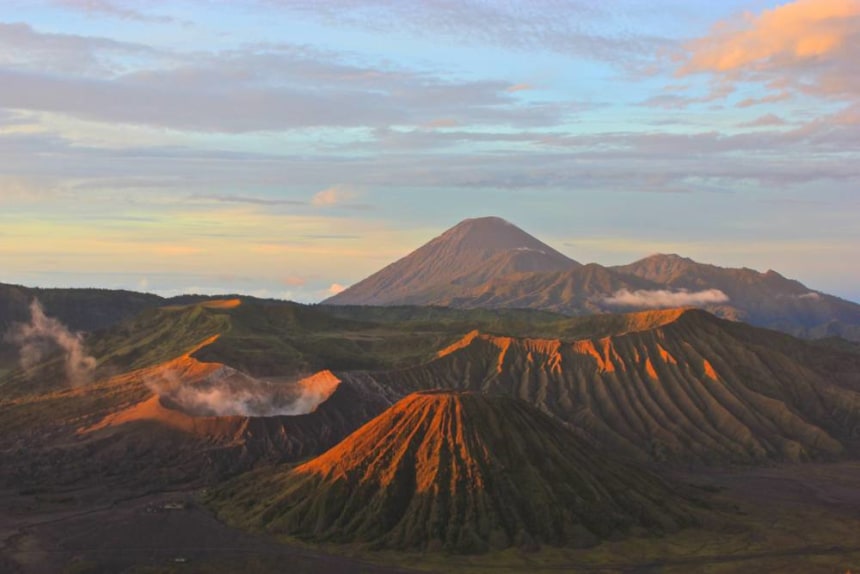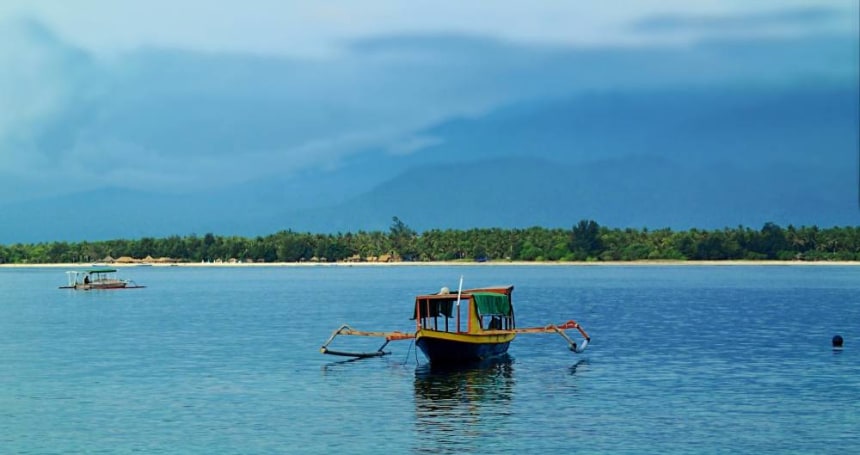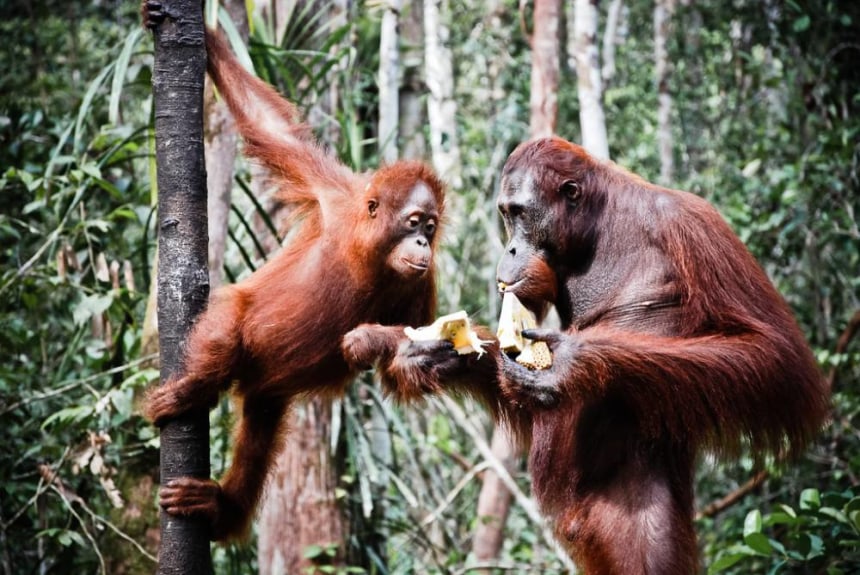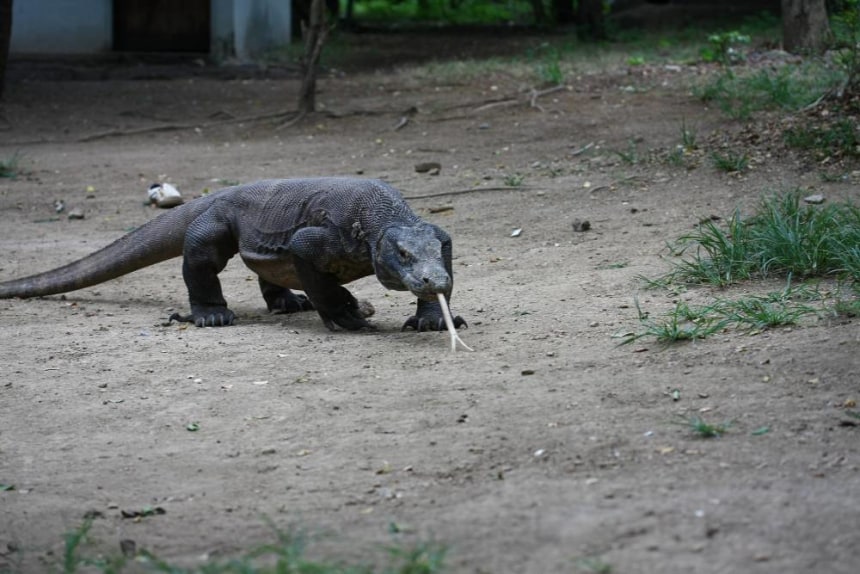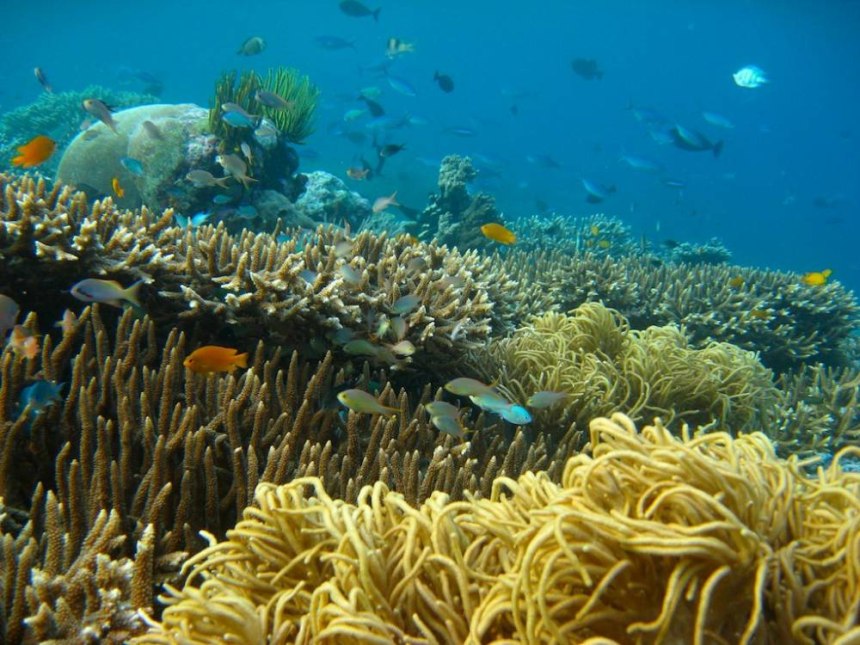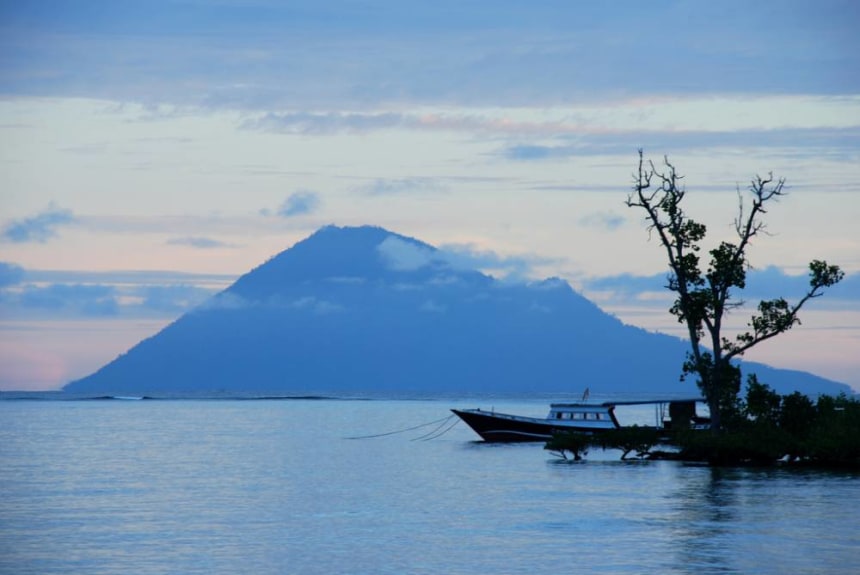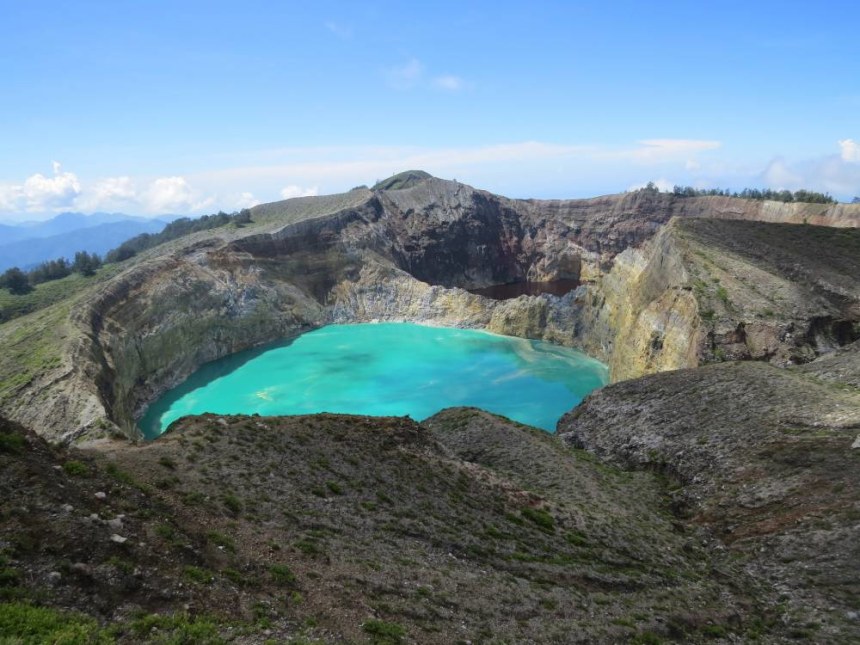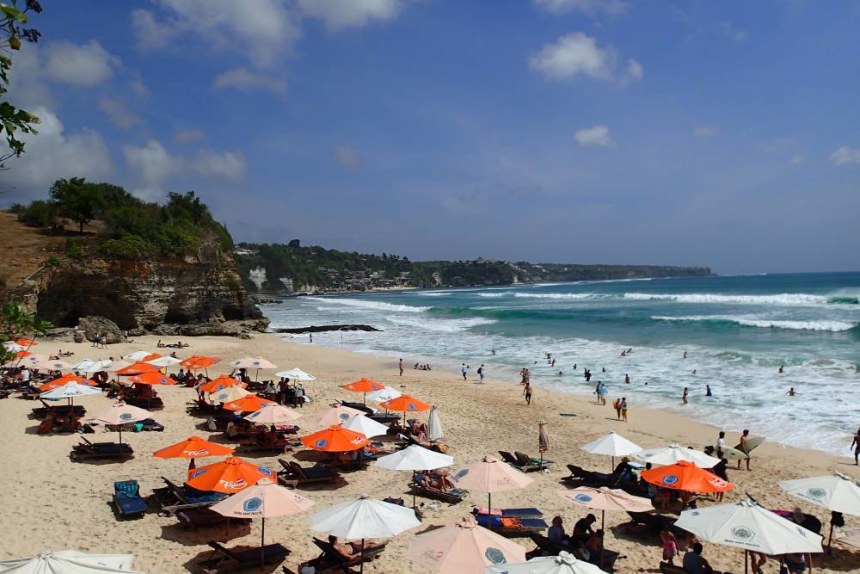| 6 mins read
By Joseph Francis
Indonesia and Jakarta for sun and sand and urban chic; here is an Indonesia travel guide with a difference! Get a comprehensive introduction to the top natural wonders unique to this archipelago nation, from sulphur-spouting heights of Mount Bromo at the roof Java and the shimmering sands of the Gili Islands to the dragon-stalked hinterland of Komodo and so much more.
Mount Bromo
The jewel of the Bromo-Tengger-Semeru National Park, Mount Bromo draws countless trekkers each year with the promise of some of the most breathtaking sunrise panoramas in the world (typically had from the ridges of nearby Mount Penanjakan). A perfectly-formed cinder cone that puffs with volcanic steam, the peak of Bromo is a real beauty to behold. Its ridges are cracked and cut by ancient magma gorges, while sweeping views of the Tengger massif and the otherworldly so-called Sea of Sand that cuts through the valley below unfold from the top.
Arguably the most beautiful tropical islands in all of Indonesia (and some say the world!), this resplendent archipelago in the blues of the Bali Sea rarely fails to draw a gasp. Most travelers engage a Bali tour guide or a Lombok tour guide to hop across the waters by catamaran, where the pearly-white fringes of Gili Air and Gili Meno rise from the cerulean waters. Small and tight-knit, these postcard-perfect islands are dotted with rustic bamboo villages and blooming forests of coconut palm. They are also famed for their world-class free diving spots, coming complete with endangered sea turtles and multi-coloured coral gardens to boot.
Tanjung Puting National Park
Hailed as one of the top places to come and see Indonesia’s iconic orangutan, Tanjung Puting makes its home of the south side of Borneo, just on the cusp of the Java Sea. Ranging from topical mangroves and forests of coconut palms on the coast to rolling peat swamps and rainforest interiors, the region plays host to one of the most successful primate conservation projects in the country (found based around Camp Leakey), along with wild trekking trails where proboscis monkeys swing in the canopies and rubber trees abut leopard-stalked swamps.
Komodo Island
An undisputed jewel in Indonesia’s fantastic line-up of natural attractions, Komodo Island and its eponymous national park is a medley of red-hued ridges, powdery beaches and bush-clad coastal hills, all encircled by turquoise shore waters where manta rays and sharks weave between the corals. However, the real piece de resistance of this one has to be the resident population of Komodo dragons – the largest species of lizard on the planet and indigenous only to this particular section of the Lesser Sunda. Travelers can spy out this curious beast alongside wild mangrove forests, the pretty Timor deer and undulating sections of seagrass-dressed sand dunes.
Wakatobi National Park
A great swathe of shimmering, crystal-clear seas and glistening stretches of ivory-white sand that makes its home between the East Nusa Tenggara and the south coast of Sulawesi, the Wakatobi National Park encompasses a number of truly paradisiacal islands that rarely fail to impress. Shining like tropical pearls as they rise from the rollers of the Banda Sea, they play host to one of the largest barrier reefs in the world, where a whopping 750 coral species and countless, uber-colourful tropical fish lurk below the waters. Travellers here can expect sun-splashed beaches shaded by leaning palms, rolling mangrove swamps and some of the most wonderful underwater environments in the country.
Bunaken Marine Park
A veritable kaleidoscope of coral and underwater colours, the Bunaken Marine Park crowns the northern tip of rugged Sulawesi Island with its wealth of endemic tropical species and beautiful vistas of cascading coastal cliffs and mountains. A real favourite amongst travelling divers and scuba enthusiasts, the area offers sites like the sloping corals of Critter Circus, where pipefish and flatheads weave between blooms of padina seagrasses, Lekuan, with its resident blacktip sharks and sea turtles, and Fukui Point, where giant clams cluster on the shore. Visitors here can also enjoy breathtaking views of the ocean from the cliffs of Manado Tua Island, along with cultural encounters in the rural fishing villages that pepper the coast.
The Kelimutu Lakes
Set deep in the highlands of untrodden Flores, the formidable set of summits that forms Mount Kelimutu hides a series of fascinating mountain lakes that glow in shades of blue, turquoise, green and otherworldly red. This curious geological phenomenon now draws crowds of trekkers and nature tourists each year, who typically scale the volcanic mount to its top at 1,600 meters above sea level. Most treks to the top depart out of the local town of Ende, while others opt for a rumbling ride to the top by dirt bike.
Dreamland Beach
A real contender for the most breathtaking beach in all of Southeast Asia, Dreamland lives up to its name as it runs below the sheer-cut cliffs of the Bukit Peninsula in southern Bali. Gleaming in the Indonesian sun, its yellow sands sit washed over by the rollers of the Bali Sea, while locals carve their way on surfboards over the left-to-righters and patchworks of coral reef. These days, rustic guesthouses cluster on the ledges of the cliffs behind the beach; thatched bamboo structures where backpackers sip Bintang beer while watching the sunset. Meanwhile, vine-clad boulders dot the shore, coconut sellers weave along between the lapping waves and the silhouettes of swaying palms wave from the bluffs above. It’s all postcard stuff!
Gunung Leuser National Park
Draped over the mist-topped karst and volcanic ridges of the wild Barisan Mountains on the extreme north-western tip of Sumatara isle, the nearly 8,000 square kilometers that forms the Gunung Leuser National Park boasts everything from swinging orangutans to primeval Indonesian pine forests, rustic indigenous villages to the soaring peaks of Tanpa Nama and Mount Leuser itself – way up high at over 3,000 meters above sea level. Today the region is famed as one of the country’s top ecotourist draws, offering countless trekking trails that delve into the jungles from the elephant-spotted waters of Tangkahan town – now a real favourite for intrepid travellers. Those interested in seeing the park’s most famous primate would do well to hang around Ketambe, which is dedicated to orangutan conservation, while safaris here also offer the chance to see elusive Sumatran rhinos and the legendary Sumatran tiger!
Joseph ‘Rich’ Francis is a freelance travel writer who has travelled extensively in Asia and Europe. He particularly enjoys the jazz bars of Poland, the ski slopes of Austria and the beaches and cities of India.
Image Details and Licenses: https://flic.kr/p/ngTSAq (Taanjank, CC BY-NC-ND 2.0), https://flic.kr/p/n2vbeD (SarahTz, CC BY 2.0), https://flic.kr/p/atdNX6 (Gemma i Jere, CC BY-NC-ND 2.0), https://flic.kr/p/boXCd5 (Gabriel ^(oo)^, CC BY 2.0), https://flic.kr/p/7PRwft (Markus Fritze, CC BY-NC-ND 2.0), https://flic.kr/p/2GYKyo (Clifton Beard, CC BY-NC 2.0), https://flic.kr/p/r68gci (Donny Leonardi, CC BY 2.0), https://flic.kr/p/p7LhuB (Johanna Remus, CC BY-NC-ND 2.0), https://flic.kr/p/xPpQxR (Andrew H, CC BY-ND 2.0)


